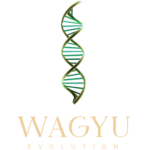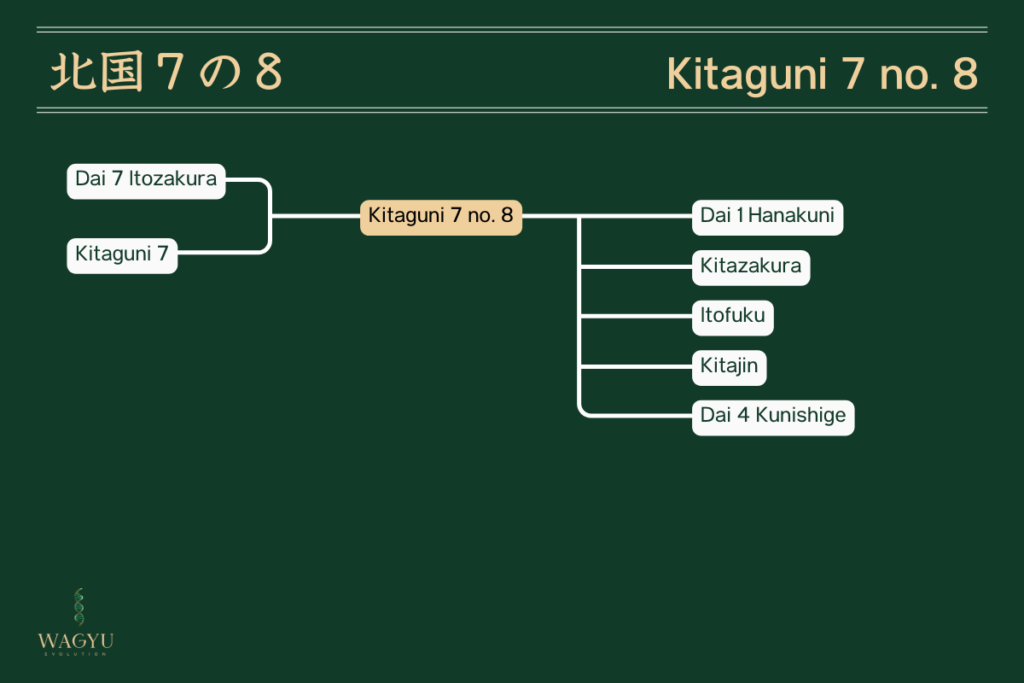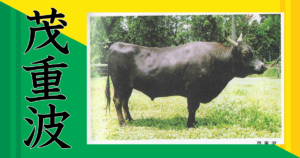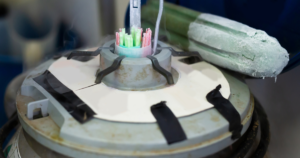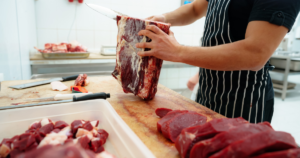Kitaguni 7 No.8: One Of Japan’s Most Fertile Bull
Table of Contents
* Note: This is not a direct translation of Kenichi Ono’s “Top 100 Famous Beef of Japan [Revised Edition]” but a summary that was written using it as a direct source.
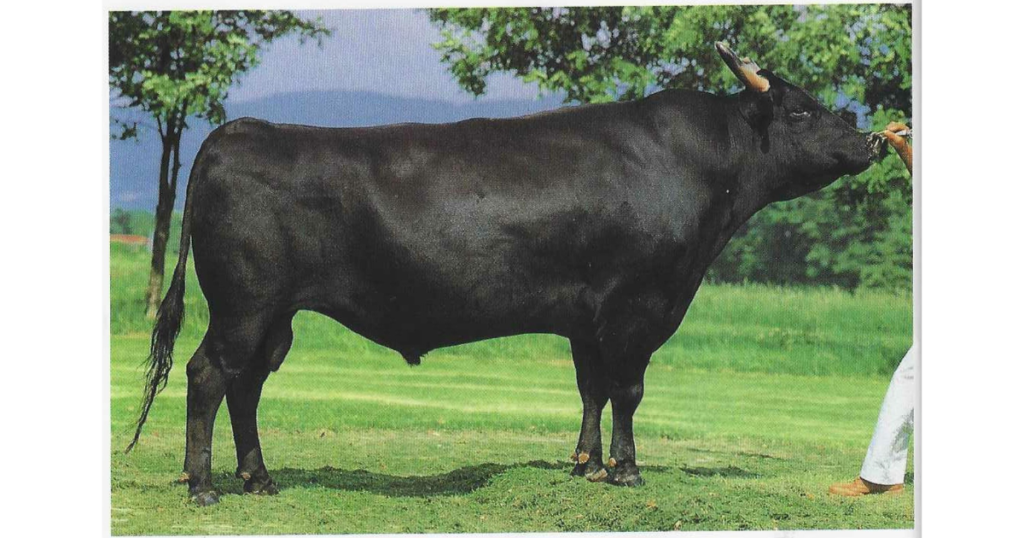
Figure 1. Kitaguni 7 no. 8
Early Life
There are many breeding bulls from the Dai 7 Itozakura that are active throughout Japan, but the one that has contributed the most to the breeding bulls is undoubtedly “Kitaguni 7 no.8”.
Kitaguni 7 no. 8 was born on February 5, 1984 at the home of Toshio Okuni in Oda City, Shimane Prefecture. His father was Dai 7 Itozakura and his mother was Kitaguni 7, which is considered to be the masterpiece of Harumi, the representative bull of the Kedaka line. Kitaguni 7 no. 8 was named as such because he is literally the 8th calf that came from Kitaguni 7.
Kitaguni 7 no. 8 was raised by Kenji Mukugi, a breeder, and became the property of the Livestock Improvement Corporation of Japan, where an indirect test was conducted.
However, even after being tested in 1990, Kitaguni was still overshadowed by his contemporaries- Yasufuku 165 no. 9 and his senior Keifuji. Fortunately, this was actually a blessing in disguise. Due to being overshadowed, he was not overworked during his youth and since he was able to inherit his maternal side’s longevity and reproductive ability, his performance is extremely stable even now at over 10 years old. In contrast to Tani Shigeru, who is of the same age and had good results in his youth (at the time of indirect testing), but his performance has since declined. Tani Shigeru was popular at first, and has a history of producing tens of thousands of straws every year since he was two years old.
Thus, Kitaguni 7 no. 8, who had an easy life until he was five years old, still easily handles semen collection twice a week, and a related person said that his majestic appearance at that time even felt dignified. As of July 1997, he has surpassed Monjiro and is breaking the record for the most straw production in the history of Japanese Wagyu beef (semen collection once a week as of August 1999).
Features
Strengths: Growth Rate, Meat Quality, Fat Quality, Genetic Prowess, and Reproductive Ability
Weaknesses: Body Height, Facial Features, Flat Horns, Coat Texture, Thicker-Boned, Fertility Rate (depending on the collection year), Butt/Hip Shape
Kitaguni 7 no. 8, like other famous bulls, has a distinct appearance. First of all, his coat is black and somewhat bristly. Also, for a breed of Itozakura, he is unusual in that many of his horns are flat. He also has hips that are large and wide (commonly known as pig’s hips).
It seems that Kitaguni 7 no. 8 expresses the physical characteristics of his maternal lineage better than his paternal side, and because of this, his offspring are characterized with a large variation in weight gain but less occurrence of weak offspring and offspring with skeletal abnormalities (both of which are common with Dai 7 Itozakura’s offspring).
Kenichi Ono predicts that in the future the offspring of Kitaguni 7 no. 8 will be separated from the Itozakura lineage and will be classified into the Kitaguni lineage instead.
Pedigree Background
The sire of Kitaguni 7 no. 8, Dai 7 Itozakura, is a breeding bull representing the Showa era, and representative cows include Itofuku, Itoryu (Oita), Itofuji (Okayama), Itokitatsuru (Tottori), Tanimizu, Keito (Livestock Improvement Association), Itohiro 2 (Miyazaki), Kitaguni 7 no 3 (Kagoshima), Itonami, Itoharu (Saga), Chubu 6 (Okinawa), Itohana, Itohare Nami (Shimane), and Itoharumi (Nagasaki).
The dam’s sire, Harumi, is a famous Kedaka-line bull from Tottori Prefecture that was introduced to Shimane Prefecture in 1967, and has an excellent track record in improving reproductive ability, weight gain, and body shape.
Representatives from Harumi’s offspring include Kenharu, Toyoharu, (Shimane), No. 8 Haru (Hokkaido), and Teruhime 3 (Okinawa). The bull’s mother, Kitaguni 7, is a prolific and long-lived breeder with 15 births, including 3 breeding bulls.
Major Successor Bulls
Bulls with Kitaguni 7 no. 8 as the Sire:
- Kita no Toyojun (Yamagata Prefecture)
He is the 2nd generation ancestor of Monjiro,and 3rd generation ancestor of Morisho. Born on May 7, 1995, in the Yamagata Prefecture, his phenotype is very similar to characteristics of cattle residing in the northern region of Japan, and his maternal lineage is good, so it is expected to be a good breed.
- Kitazakura (Okinawa Prefecture)
He is the 2nd ancestor to Itofuji, and 3rd ancestor to Teruhime 3. Born on September 11, 1991, in Ishigaki City, Okinawa Prefecture. The prefecture where he was born is where the Itofuji and Harumi breeds of cattle are well developed, thus it is expected that his abilities will reach its full potential due to the compatibility of his parental lineages.
- Itofuku (Kagoshima Prefecture)
He is the second generation ancestor of Yasufuku, and third ancestor of Shingetsu. Born on May 29, 1994, in the Kagoshima Prefecture. He is a product of crossing Yasufuku no. 7 and Yasufuku no. 8 from Gifu, and is expected to become a breeding bull that emphasizes the strengths of both.
- Dai 1 Hanakuni (Aomori Prefecture)
Second generation of Hanazakura and is a rising star in the Aomori Prefecture. Currently, more efforts are being made to further breed the successor of Kitaguni 7 no. 8 across Japan.
Breeding Considerations & Recommendations
Kitaguni 7 no. 8 has strong genetics from both the Itozakura and Harumi (Kedaka) lines, so care must be taken when crossbreeding with Shimane or Tottori cattle, and crossbreeding with low-stature cattle (such as Itohana) should be avoided.
It is recommended to pair him with cattle from the Hirashige and Yasufuku bloodlines. For fattening purposes, it is recommended to pair him with cattle from the Monjiro or Kikumi bloodlines (particularly Kikuyasumidoi or Kikuterudoi) both of which are proven to have good meat quality.
References
小野健一. 日本名牛百選〔改訂版〕(pp.41-46). 肉牛新報社.
